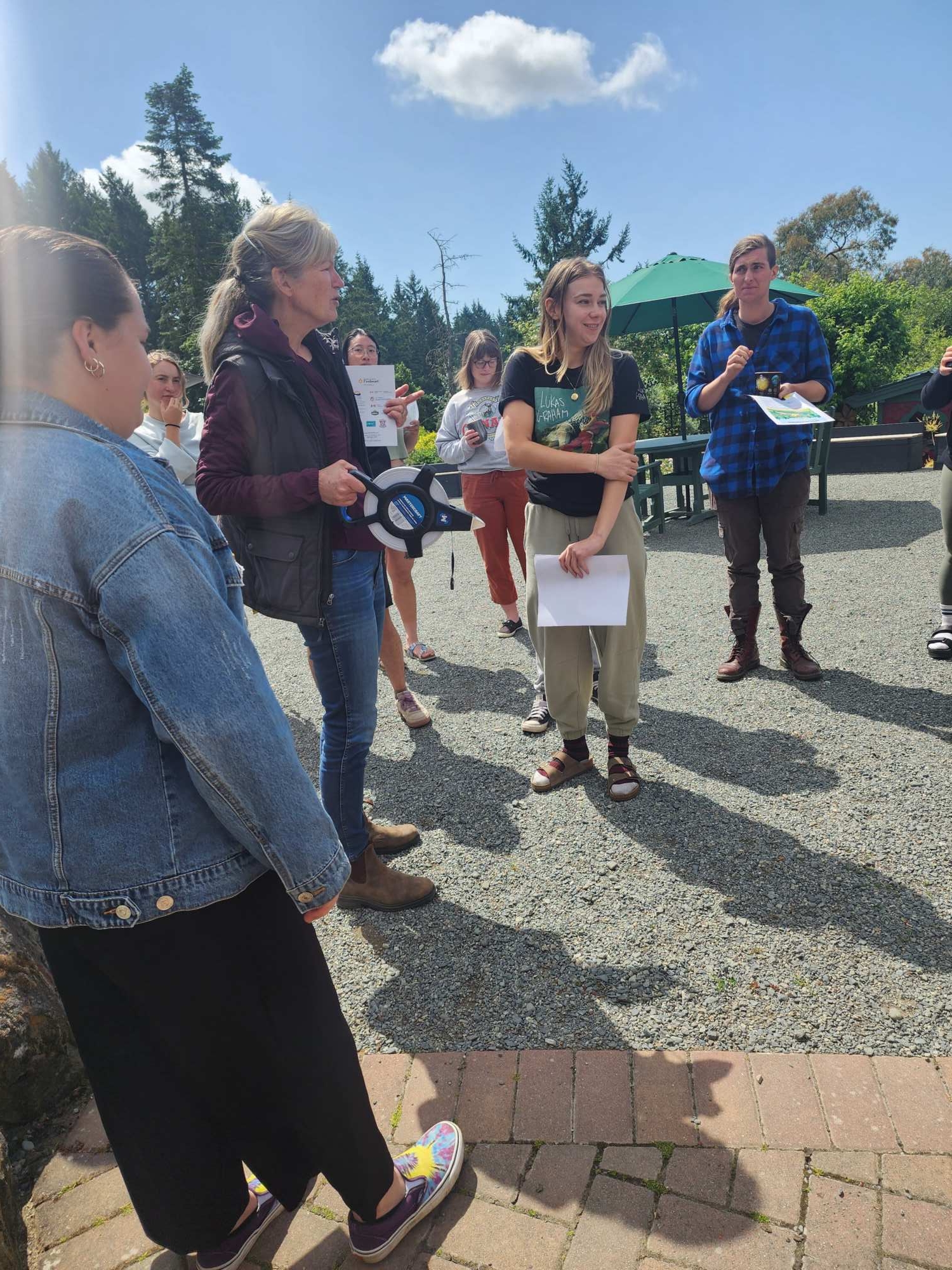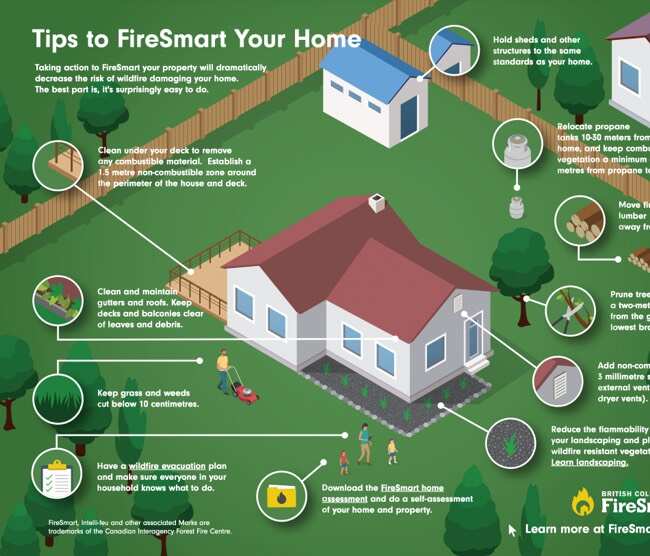Special Topic: Forest Grooming
Student Blog Post by Lynsey Saunders and Felicia Pedersen
When envisioning plans for a new garden design, or even when considering day-to-day maintenance and your gardening To-Do list, do you think about wildfire damage prevention and wildfire preventative maintenance? When applying to Pacific Horticulture College, I never imagined myself learning about or factoring wildfire resiliency into my horticultural practises, until Jennie Sparkes of Fire Break Garden Restoration Services came to present Forest Grooming for one of our Special Topics classes.
So, what is Forest Grooming and why should we care about it? Before we get into Forest Grooming, let's talk wildfires and their connection to gardening. Many of us in British Columbia are extremely privileged to have our homes nestled amongst some of the most beautiful natural landscapes, often literally having the wilderness at our backdoor. Although it is wonderful to be able to engage so closely with nature, there are inherent risks that come with living in these wilderness-urban interfaces, one of the most catastrophic being wildfires. With our summers trending in the direction of becoming hotter and drier and wildfires becoming more common (for a variety of reasons), considering your home's wildfire resiliency and applying horticultural practises to reduce your risk of wildfire loss seems like an obvious choice.
One of the major contributing factors of wildfires is a buildup of fuel – dead and dry tree and plant materials build up on the forest floor, creating a tinderbox awaiting ignition. Wildfires are actually part of a natural process of cleansing and regeneration that forests undergo and under normal circumstances, it clears away the dead debris and prevents it from excessively building up. However, wildfires obviously pose a threat to any communities in these wilderness-urban interfaces, and we suppress them to protect ourselves. This suppression creates the “Wildfire Paradox”, wherein the act of suppressing wildfires actually contributes to the frequency and intensity of future fires, as the “fuel” of debris does not get cleared away and is allowed to build up. Forest grooming is the act of consciously removing this built up of “clutter” from forested areas, reducing the risk of wildfires and increasing resiliency against wildfires. Forest grooming is not limited to debris removal, and can also involve the pruning of branches on the lower portions of trees to prevent “fire ladders” (opportunities for ground fires to move upwards). The goal of forest grooming is to engineer an environment that removes fire risk factors, while maintaining the natural beauty and functionality of an ecosystem.
Forest grooming is a great practise for any of the more “wild” areas of your property, but it is only one aspect of what Jennie does at Fire Break Garden Restoration Services. When it comes to your garden beds and the more immediate areas of your home there is lots that can be done to create “fire breaks” and protect your home from wildfire loss.
As our desire to be more closely tied to nature lures us ever further into wilderness spaces to live, our responsibility to be mindful of ways to protect ourselves and our environment also needs to increase. By applying her combined forestry, ecosystem management, and permaculture experience, in conjunction with www.firesmartbc.ca's “FireSmart 101” protocols, Jennie hopes to educate homeowners, community members, and hopefully, future developers to take some basic steps that aid in the prevention of wildfire spread, and may help to make the difference between keeping your home in a wildfire, or losing it.
There are 3 zones to consider when “Fire-Smarting” your property, known as the Home Ignition Zones. These zones are considered the areas which could facilitate catching your home on fire under “ideal” conditions. Did you know that sparks can fly up to 14km?! It is not often direct flame that is the culprit for a spreading fire, but the sparks and embers that travel. Topography also plays a huge factor. Rising air from a fire can preheat vegetation and combustibles up hills, accelerating a blaze.
The first zone, known as the Immediate Zone, lies within 1.5m of your home and accompanying structures ie. sheds, decks etc. Try to avoid planting trees, woody shrubs, or oily aromatic perennials. If they are present, keep them pruned and tidy. Clear down combustible vegetation touching the immediate structure and consider replacing it with a non-combustible alternative such as gravel, concrete, brick or bare earth. If you are one of the lucky ones in the construction or renovation phase of your home, perhaps source out some non-combustible building materials, or a metal roof and give yourself an extra leg up.
The second zone, or the Intermediate Zone, lies within the area between 1.5m from the house and 10m from the house. Features within this area are controlled to reduce the likelihood of fire transmission. Avoid using woody mulches and remove woody debris. Try to ensure woodpiles and combustible sheds or structures are out of this area, as well as any recreational vehicles, which are better stored in the last of the 3 zones, the Extended Zone.
The final zone encompasses the area between 10m and 30m. Eliminating the fire is not the aim in the Extended Zone, but to slow down and reduce the intensity of it. Selectively remove trees to improve spacing and reduce the ability for the fire to spread from tree to tree. Prune existing trees of lower limbs up to 2m. Maintain and eliminate any accumulation of dead and dry materials regularly.
These practices do not have to stop at 30m either, going beyond your own property and educating neighbours and community members can be your job as well! The more FireSmart your community is, the increased likelihood that you'll all come out the other side of a potential tragedy better off. Look into the free resources offered by FireSmart BC, such as the “FireSmart Plant Program”, and grants towards Fire-Smarting properties. Check in with your local fire department to help to assess the practices best suited for your property. Knowledge is power, so go out, educate yourself, apply some of these new tools and spread the word!





